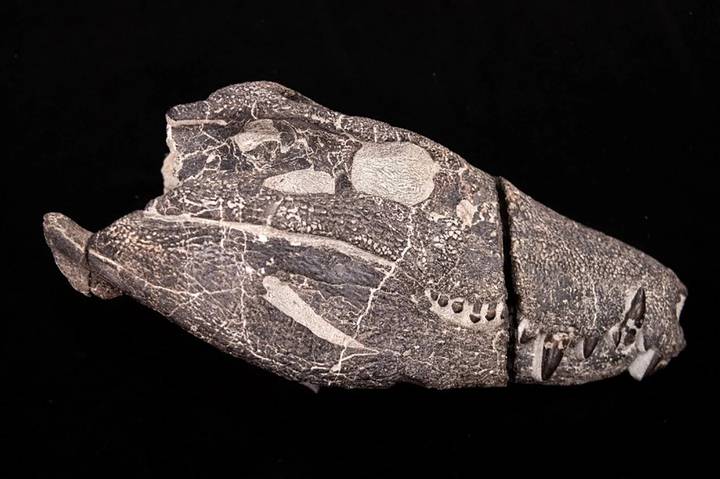A prehistoric crocodile that hunted dinosaurs is discovered in Patagonia.

An international team, led by scientists from the Argentine Museum of Natural Sciences (MACN), unearthed near El Calafate the nearly complete skeleton of a giant relative of crocodiles, which they named Kostensuchus atrox.
Analyses of the fossil, which is in an exceptional state of preservation, indicate that this animal was a hypercarnivore about 3.5 meters long and weighing around 250 kilograms — in other words, unlike its modern relatives, it stood out as a primarily terrestrial hunter.
Its short, robust skull, along with blade-like sharp teeth, was adapted to tear the flesh of its prey, which included medium-sized dinosaurs.

Its predatory nature is reflected in its name. The full designation, Kostensuchus atrox, combines the Tehuelche word “Kosten,” in honor of the Patagonian wind; suchus, the Greek form referring to the Egyptian crocodile god Sobek; and the Latin term atrox, meaning “terrible.”
The significance of this discovery, published in the scientific journal PLOS One, lies in the completeness of the skeleton. Until now, knowledge about its family, the peirosaurids, was based on very fragmentary remains. This specimen provides, for the first time, a clear view of the anatomy and lifestyle of these predators, demonstrating that the top of the food chain at the end of the Cretaceous was more complex than previously thought, with gigantic crocodyliforms competing for territory with dinosaurs shortly before the mass extinction event that reshaped life on Earth.






